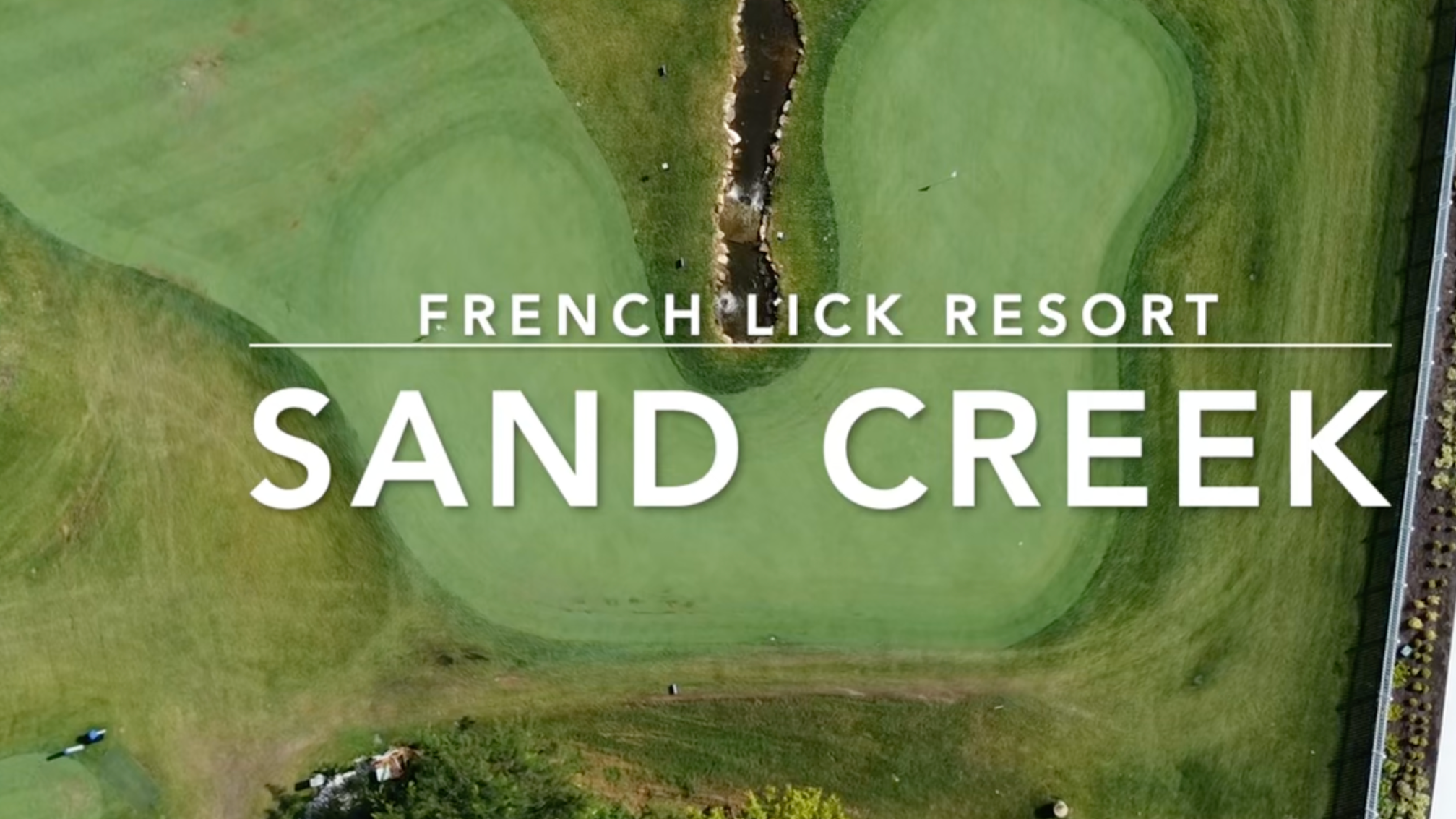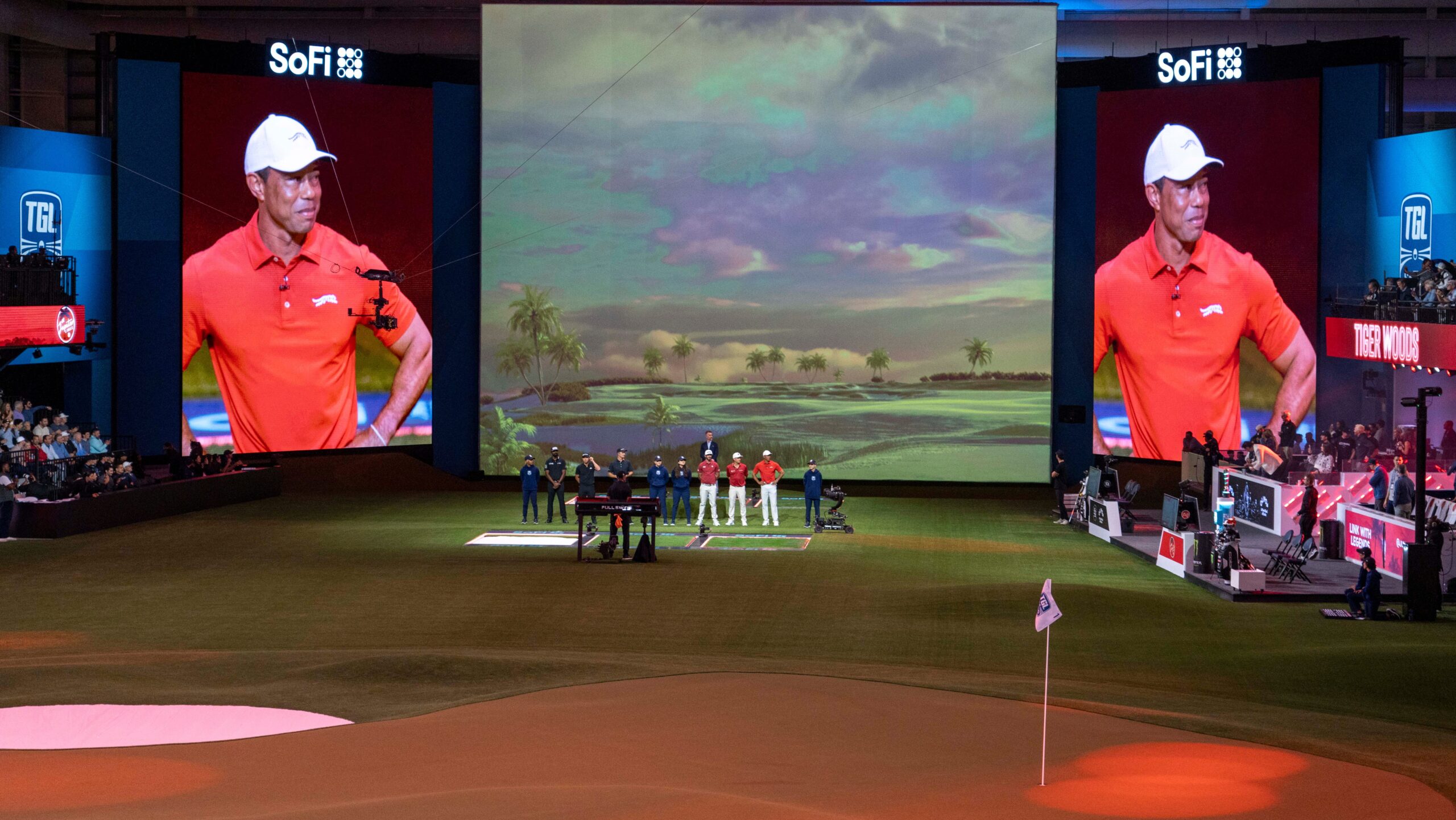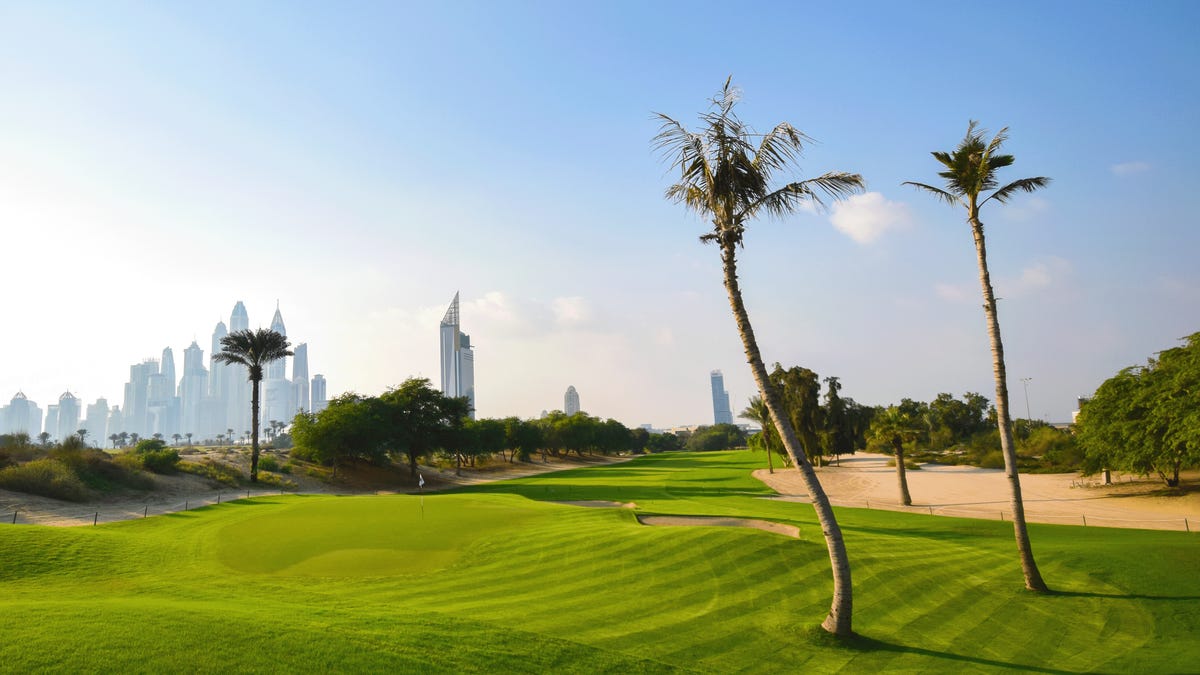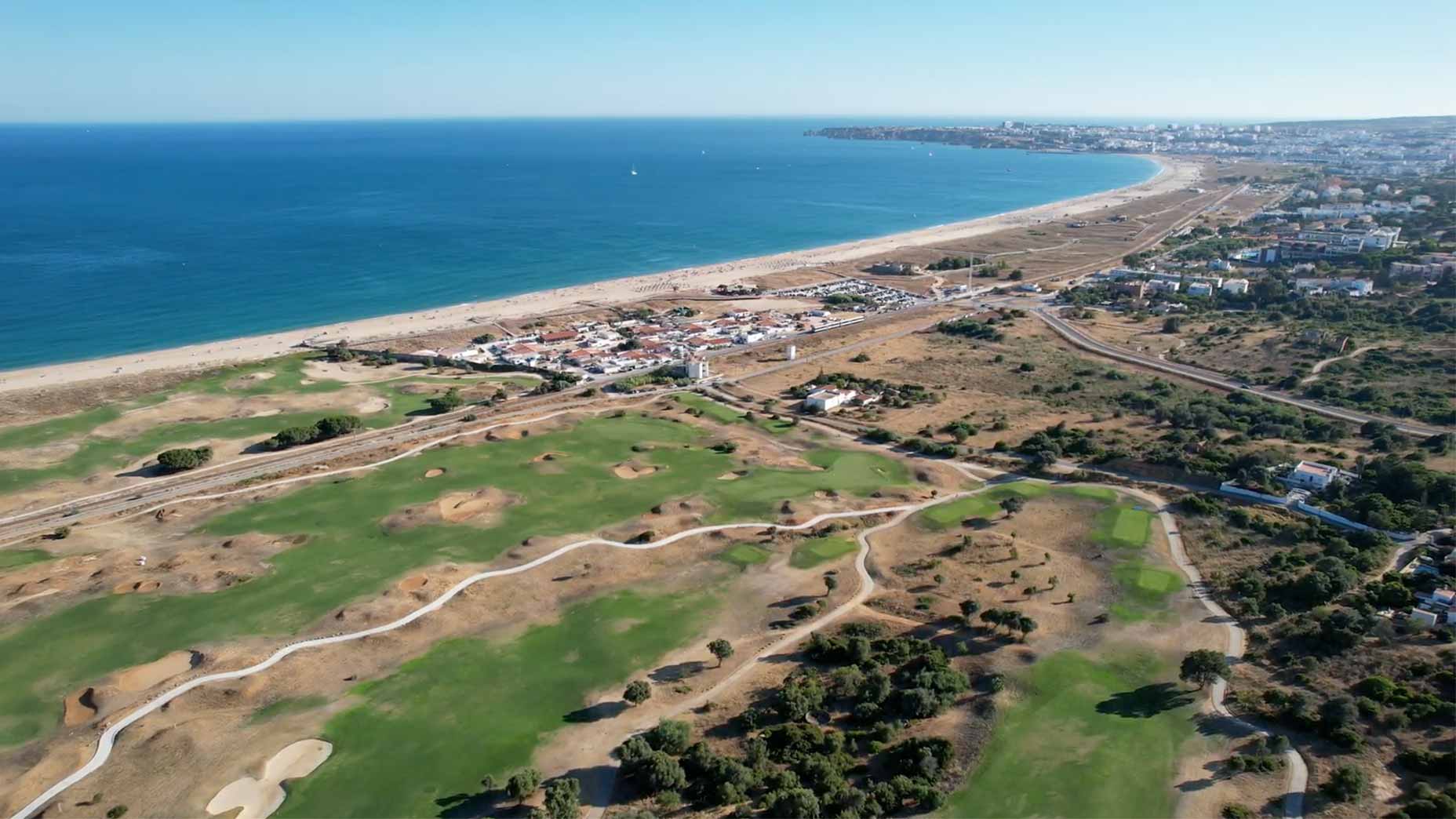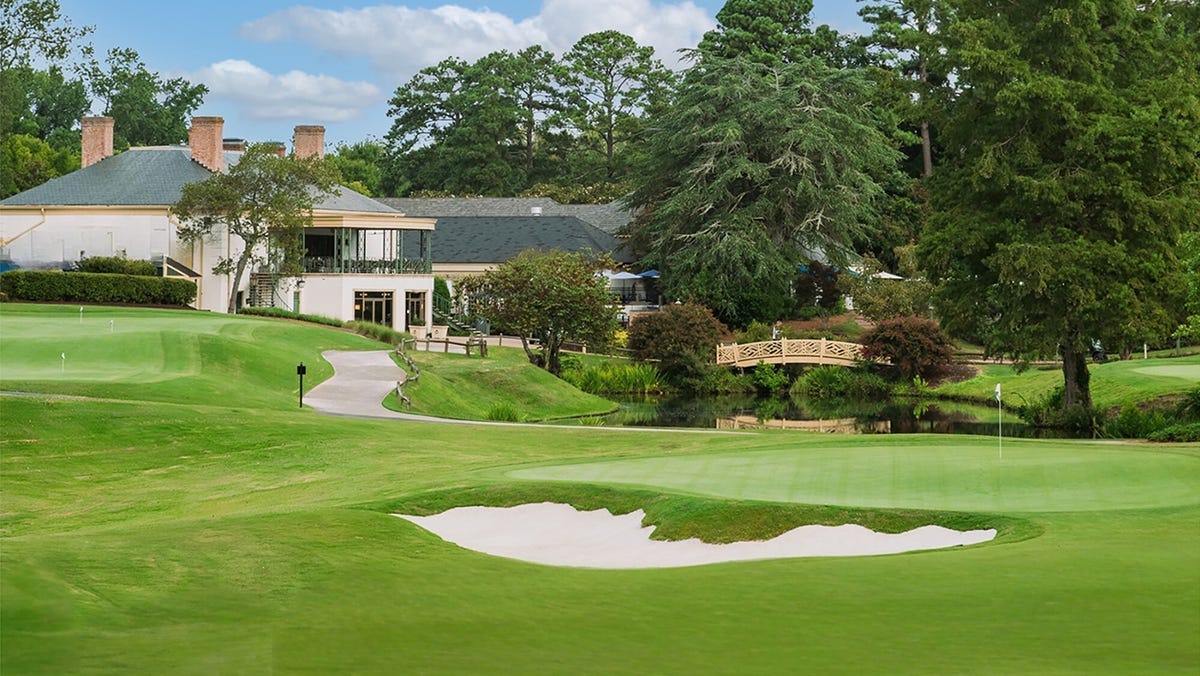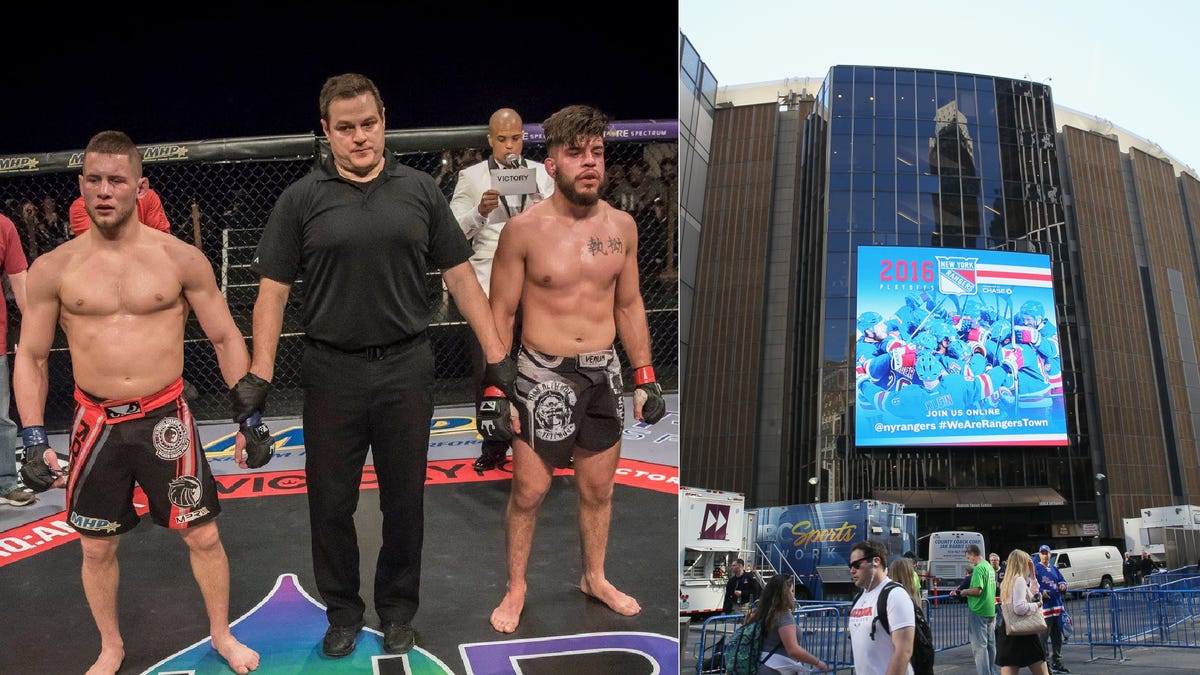When the cameras rolled on the evening of Jan. 7, 2025, inside what essentially was a massive sound stage built on the campus of Florida’s Palm Beach State College, nothing like it had ever been tried in the history of sports. And there was no turning back.
After thousands of hours of planning and millions of dollars spent, the tech-infused TGL was making its debut live in front of fans at SoFi Center and on ESPN before an audience that would later be measured to have reached nearly 1 million. The stakes were enormous, considering that two of the game’s biggest stars, Tiger Woods and Rory McIlroy, had attached themselves to a venture in which golf and technology would meet like never before.
Advertisement
And because this first bow involved computers and cameras and radar and a five-story-high screen and a green on a turntable that could rotate 360 degrees and (gulp) human beings using golf clubs and managing the controls, just about anything could happen. One unforeseen gremlin might bring the whole operation to an embarrassing halt and see TGL become the most cringey golf programming since Holey Moley. (Sorry Steph.)
On that first night, Andrew Macaulay must have felt the excitement/dread that Lorne Michaels did putting “Saturday Night Live” in front of the public for the first time, sans John Belushi (or John Daly). But TGL’s Chief Technology Officer, who spent eight years in a similar position at Topgolf, is a rather glass-half-full fellow, even if he’s British.
“I am a huge optimist,” Macaulay was saying over a video call with Golf Digest this week. “And I think you probably have to be, because otherwise all the bad things that could happen and did happen would probably stop you from starting.”
TGL went on that evening with very few public glitches—other than the anticlimactic result of Bay Golf Club blowing out New York Golf Club. Through 15 regular-season matches and the playoffs, Atlanta Drive Golf Club ultimately coming away the inaugural team champion, the league seemed mostly well received by the players and fans, with an average of 513,000 viewers (peaking at just more than 1 million for Woods’ debut in Week 2) that outdistanced the ratings ESPN previously got with college basketball games.
Advertisement
More From Golf Digest
Tiger Watch Tiger Woods gives update on his 2026 golf schedule (sort of)
Don’t Call it a Comeback TGL releases its 2026 schedule
There are always things to clean up after a first-time venture, and Macaulay and the teams at TMRW Sports, simulator provider Full Swing Golf and turf experts SYNLawn heard from players and viewers and spent this past year overhauling some areas and tweaking others for Season 2 that begins on Sunday, Dec. 28, with a joint broadcast on ABC and ESPN.
Advertisement
“We got the feedback, specific and emotional from the players and teams, and you sort of like stir that all together,” Macaulay said. “And then what we’re announcing here is sort of the first phase of those things that will ultimately make it more dynamic, more engaging and more exciting.”
In the buildup to the Season 2 opener, TGL is set to make a string of announcements about changes and improvements. That process started on Wednesday with the league detailing several new components. Among them is a significantly changed green complex, with the putting surface and bunkers being larger; considerably brighter and more detailed graphics for each hole; new and redesigned holes, including those that will represent each team’s designated city; larger hitting boxes; and relocated ball-tracking camera towers that previously blocked the views of on-site fans.
Here’s a detailed look at some of the changes.
The green complex

Green_Graph_Update_OCT2025
TGL graphic
Advertisement
Just as in traditional golf, much of the game in TGL is played on or around the greens, and that presented a huge challenge. How do you make pitches and putts interesting using just one green? The answer came with the technology developed by Full Swing that uses piston-like actuators under the surface to change the slopes. Between that and being able to rotate a 250-ton turntable—dubbed by the crew “Tina Turn-Her”—to change the angles on approaching shots, the players had plenty to deal with. Almost too much at times, and early on it seemed like there were more missed putts than to be expected for world-class golfers.
Macaulay said in the beginning some players would forget that the surface had changed with the next hole, and they understandably struggled to read the breaks under the bright lights, given that they are used to seeing shadows, grain and other marks at which to aim.
One other issue: At 3,800 square feet, the green was undersized by PGA Tour standards, and the excitement in pro golf comes when players are putting for birdie or eagle and not chipping for an up-and-down par.
In the biggest changes for the 2026 season, the green has been enlarged by nearly 40 percent to 5,270 square feet, while the mound in the middle that divided the surface has been lowered by 18 inches (to create better sightlines on-site). There are now two large sections of changing putting surface instead of the three smaller areas in Season 1. This allows for 12 possible hole locations, up from seven.
Advertisement
Additionally, there is one section off the green that has been softened because Macaulay said the original green was basically built on a plateau and that left few opportunities for creative bump-and-run shots. He noted that it will be up to the hole designers if they, say, want to provide an easier run-up for players going for a par 5 or defend the pin position with a steeper front.
/content/dam/images/golfdigest/fullset/2025/tgl-green-complex.jpeg
An overhead view of the enlarged putting green at the SoFi Center.
When players missed the green last season, they did seem to have difficulty at times hitting chips and pitches as crisply as they did on grass, and part of that, Macaulay said, was that the surface of the turf changed, depending on where they were. This season, he said, all of the chipping will be with the grain of the artificial surface.
Advertisement
The bunkers
Tour players normally have no problems hitting stellar bunker shots, but they likely feared hitting the beach in TGL. There were some really poor blasts—none more stunning or hilarious that Kevin Kisner’s skull than would have rocketed into the stands if it didn’t hit the flagstick and sent Woods into hysterical laughter.
TGL has eliminated the smallest and most troublesome of the bunkers and enlarged the other two to provide more manageable lies. There is more definition of the bunkers this year with the addition of riveted faces. The composition of the sand will be a bit different, Macaulay said, because they have a better handle on the moisture it requires after Season 1’s was a bit “too fluffy.”
The graphics
Advertisement
The images of the holes on the 53-foot-tall screen seemed fairly stunning, but those will be remembered as looking like watercolor pastels compared to the vibrancy this time around. “This is a huge deal,” Macaulay said while giving credit to the work of Full Swing.
The new look is being accomplished by using the oft-used game-programming software Unity 6 with high definition, rather than standard. “There will be clouds and water moving,” Macaulay said. “We had some water movement last season, but nothing as realistic as some of the stuff we’ve got now.”
The holes
In Season 1, numerous esteemed golf course architects got their shot at creating holes, and the results ranged from the mildly traditional to those like “Cliffhanger” and “Temple” that you would find on a world’s wackiest golf holes calendar. In all, TGL used 29 of the 30 originally designed holes, and there are more that will be sprinkled in this year.
Advertisement
To maybe no one’s surprise, Macaulay said fans gravitated toward lauding the non-traditional holes, and we’ll probably be seeing more of those in Season 2. Also, various established holes have been reworked to remake them to represent the various team’s cities.
We’ve seen a couple of previews, and there will be no mistaking the locations.
The turntable
The massive spinning record that is the green on the turntable hasn’t changed, but it’s worth noting that it was Macaulay’s biggest challenge heading into the first season. While all of the other equipment was tested elsewhere before being installed at SoFi Center, there was no way to do that with the turntable.
Advertisement
“There was a mechanical nature to it along with an electronic nature, and that was the hardest thing,” Macaulay said.
The biggest issue was turning the 250-ton disc in a timely fashion—as quick as 90 seconds—considering that, for instance, on a par 3 there was little time between when the players hit their tee shots and their arrival to the green. The group figured out that the most they could push it to spin in any one sequence was about 250 degrees.
“The greatest reward and euphoria is when we got it all to work,” Macaulay said.
He might as well have been talking about the whole darned thing.

